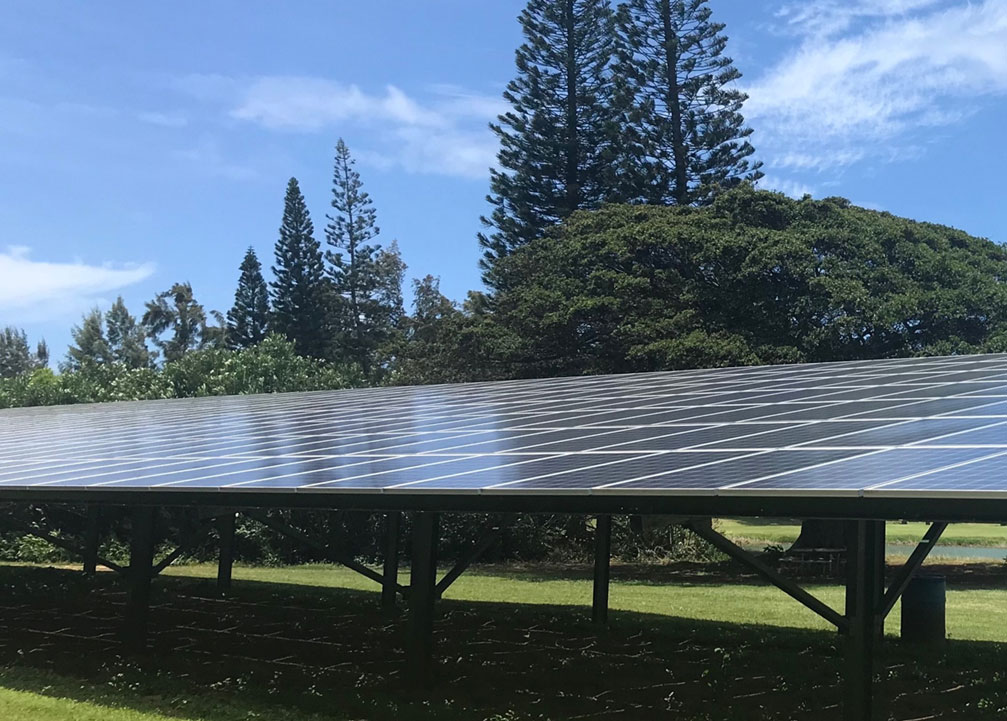How Superintendents Drive Energy Efficiencies and Help the Planet
INSIGHTS FROM THE ROCKY MOUNTAIN GOLF COURSE SUPERINTENDENTS ASSOCIATION
As we anxiously await spring, with all of its blooms and blossoms, our Superintendents are taking proactive measures to reduce energy consumption. Golf facility managers take steps toward identifying options for conservation, efficiency, and cost savings.
To address current needs and future energy reduction opportunities, managers evaluate energy conservation performance practices based on the following categories:
- General energy conservation position statements on policy and planning
- Buildings and amenities statements – infrastructure and facility amenities such as the clubhouse, swimming pool, restaurant, parking lot, kitchen, offices, maintenance building(s), tennis courts, etc.
- Golf course statements – golf course and surrounding landscapes, pump station, irrigation system and related agronomic operations.
Operational uses at golf facilities are segmented to meet irrigation, turf maintenance, buildings, clubhouse operations, swimming pools and various amenity needs. Colorado golf courses have implemented BMPs to drive behaviors and processes, improve efficiencies, and promote education.
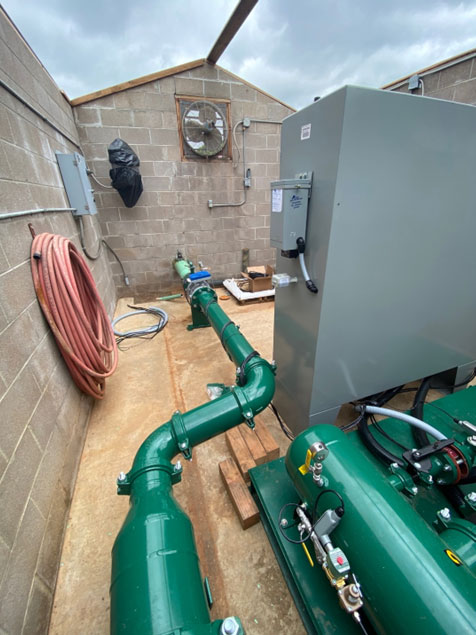
Driving Energy Efficiencies through BMPs
Radius Sports Group, a sustainability consulting firm, conducted an environmental study amongst golf facility operators in Colorado to gather inputs that would assist in providing an understanding of the golf industry’s environmental impact in the state. More than half of Colorado golf course facility respondents have at least five or more energy conservation measures in place and 100 percent of respondents have implemented two or more.

The research found that top energy conservation efforts being implemented at golf courses in Colorado include:
- 99% of golf courses use Variable Frequency Drives (VFDs) in Pump Stations.
- 92% utilize indoor and outdoor LED lighting.
- 88% are using at least four different energy sources.
- 56% of respondents have at least five or more energy conservation measures in place.
- 100% of respondents have implemented two or more energy conservation efforts.
- 22% of golf courses utilize lithium-ion battery golf carts and 31% are planning to add them in less than five years to reduce their environmental footprint.
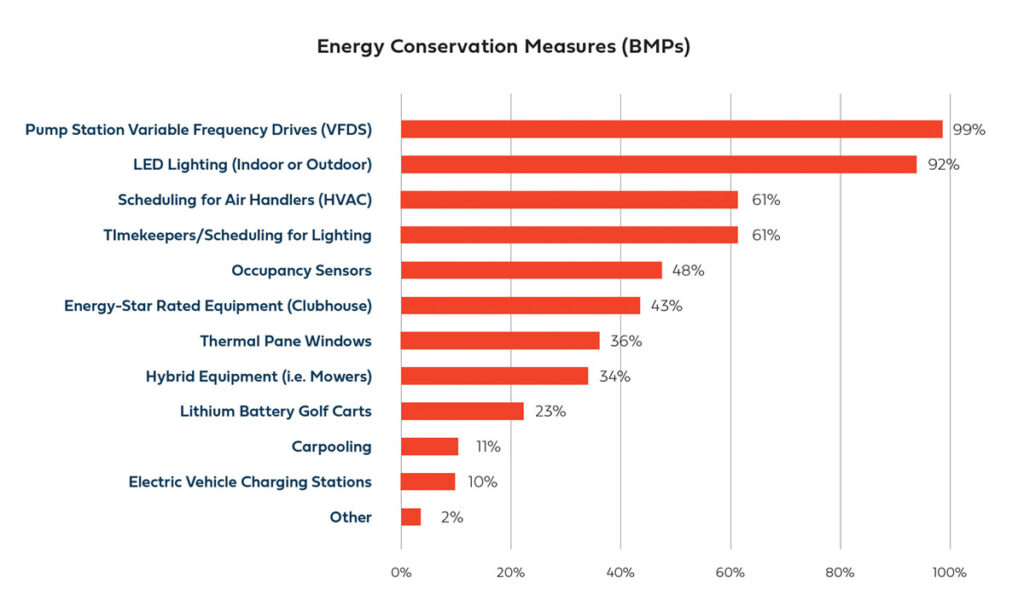
Colorado golf superintendents set goals for the golf course operation by developing an implementation plan. They also set energy-use goals according to efficiency of the building, infrastructure, and equipment. Superintendents also benchmark practices to evaluate consumption versus local facilities of similar size.
Colorado Golf BMPs for Energy Conservation:
- Monitor energy use: track data, evaluate billing meters, benchmark.
- Develop equipment inventory incorporating individual equipment’s energy use, traffic patterns, etc. (maintenance records, operation hours, etc.)
- Install adequate meters, gauges, etc.
- Use non-demand electrical hour rates for charging golf carts, using pumps, charging maintenance equipment, and other items.
- Limit high-consumption activities when demand is high.
- Conduct energy & lighting audits; install LED lighting and/or retrofit devices.
- Install motion sensors for lights where appropriate.
- Use alternative energy, such as solar, geothermal, and wind.
- Conduct a carbon footprint analysis.
- Install a programmable thermostat.
- Add insulation where needed.
- Install National Electrical Manufacturers Association’s premium efficiency-rated pump motors.
- Install solar/geothermal pumps for pools and spa.
- Identify future energy needs and maintain good record-keeping.
- Prioritize energy consumption as part of purchase/decision-making process.
Colorado golf course superintendents developed Energy Conservation Checklists for product selection and behaviors as part of the BMP guide development process. The product selection checklist covers how to incorporate energy conservation features and benefits into the decision-making process for sourcing and product selection.
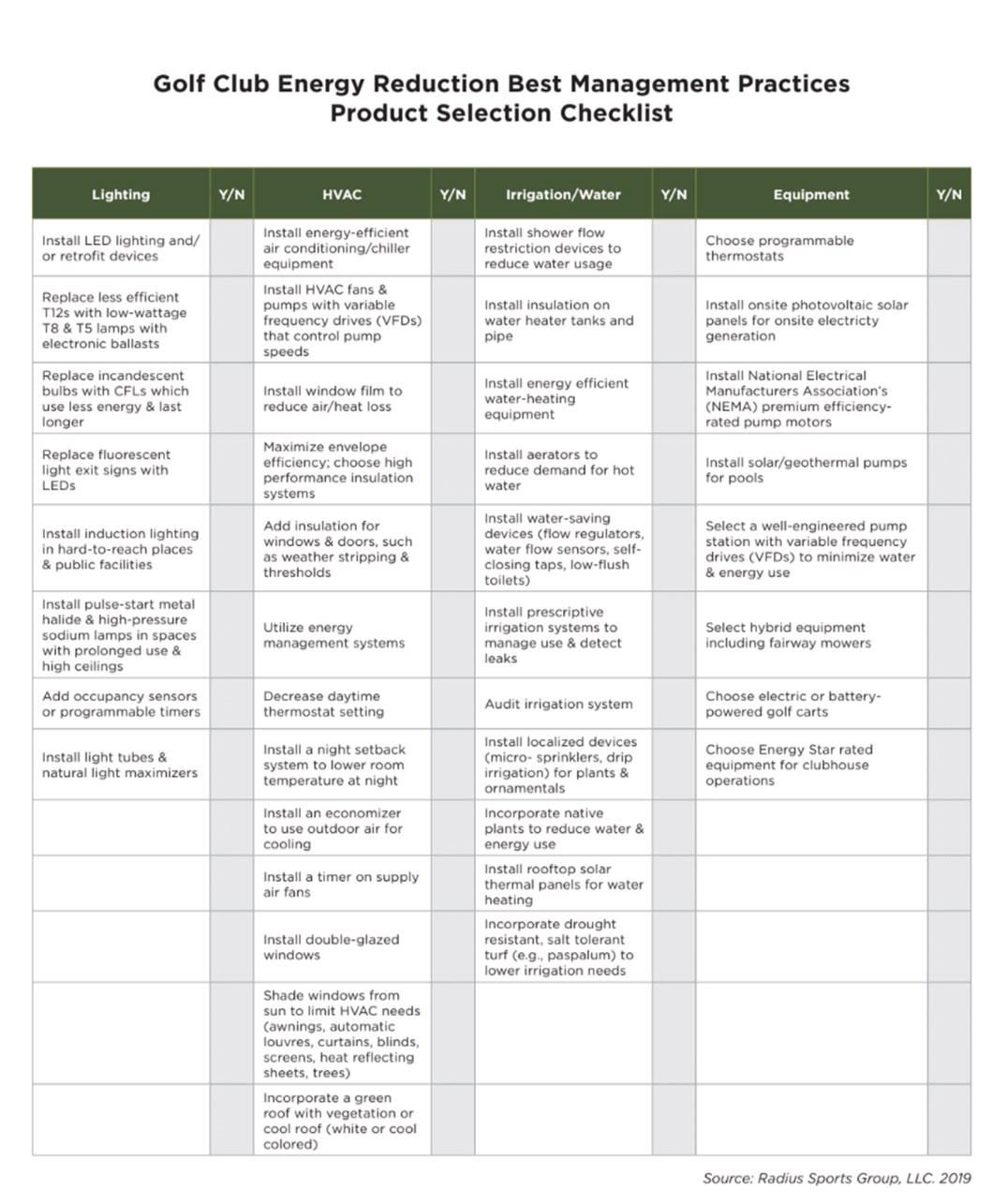
The behavioral checklist provides BMPs for operations pertaining to lighting, maintenance of HVAC programs, irrigation processes and systems, and equipment usage.
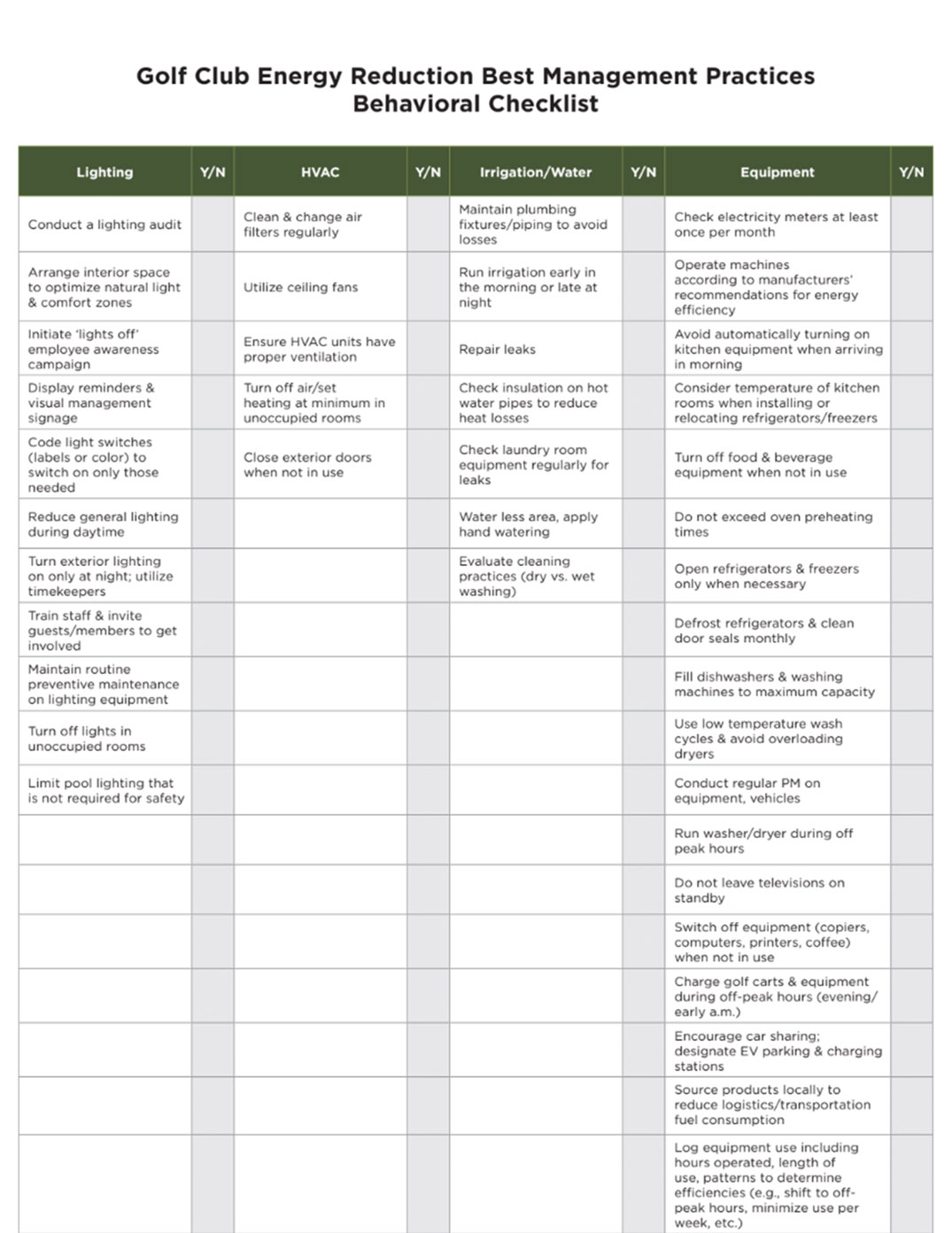
The next time you are playing your favorite course, know that our superintendents have spent valuable time and energy implementing practices for maximum energy efficiencies to minimize costs for their clubs and help the environment. For more on Colorado golf industry BMPs related to energy conservation, visit https://rmgcsa.org/CO_BMP_Guide_E-magazine.







